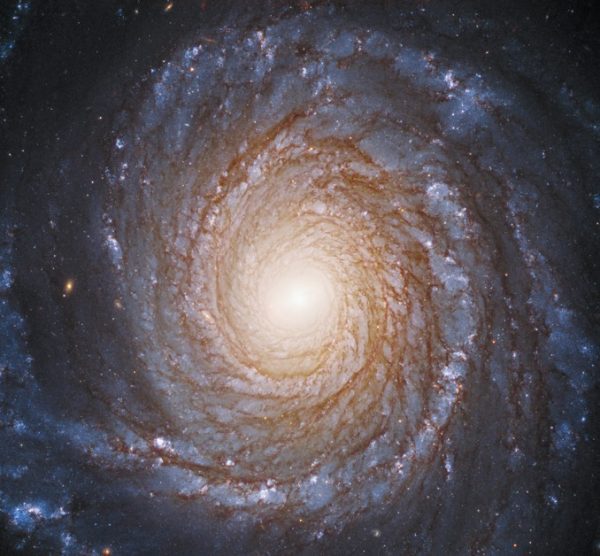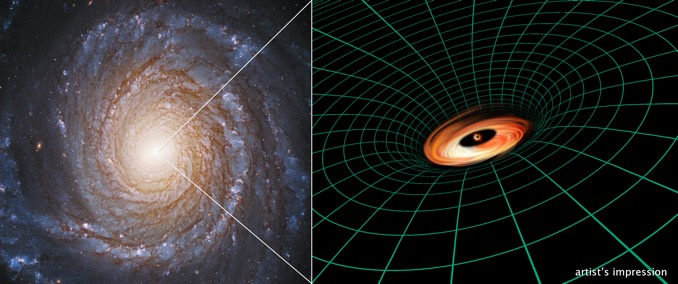Hubble studies effects of monster black hole – Astronomy Now – Astronomy Now Online
NGC 3147, as imaged by the Hubble Space Telescope, is a beautiful face-on spiral galaxy 130 million light years away in the constellation Draco that features a multitude of young blue stars, vast nebulas and silhouetted dust lanes with sweeping, well-defined spiral arms. It’s also home to a supermassive black hole some 250 million times more massive than the Sun that is surrounded by a compact disc made up of stars and dust trapped in the hole’s gravitational grip.

The black hole’s enormous gravity warps the space the galaxy occupies. Light emitted from particles whipping around the hole at 10 percent the speed of light brightens slightly as it approaches Earth and dims as it moves away, an effect known as relativistic beaming. In addition, the reddish-yellow light near the core is stretched as it struggles to overcome the black hole’s gravity and escape into space.
“We’ve never seen the effects of both general and special relativity in visible light with this much clarity,” said Marco Chiaberge of the European Space Agency and the Space Telescope Science Institute at Johns Hopkins University.

Stefano Bianchi of Università degli Studi Roma Tre, in Rome, first author of a paper describing the phenomena, described the observations as “an intriguing peek at a disk very close to a black hole, so close that the velocities and the intensity of the gravitational pull are affecting how the photons of light look.”
“We cannot understand the data unless we include the theories of relativity.”





